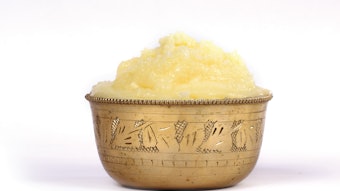
Creating rhythm, balance and ritual in our lives, makes for health, vitality and contentment. The warmth of the morning sunlight on our bodies reinforces our natural circadian rhythms.1 As our body prepares to wake up, cortisol gets released, energizing our body and warming up our core body temperature. Our body’s circadian system, or internal body clock, regulates many of our physiological processes, including cell regeneration, brain wave activity, body temperature, energy levels and hormone production.2
Sunshine Snoozing
As humans, we are diurnal creatures, so our circadian rhythms revolve around the patterns of the sun. Sunshine lifts our spirits, revitalizes our souls and nourishes many of our body functions. After sunset, our bodies begin to cool, kicking off melatonin production and preparing us for sleep. Melatonin is the hormone that regulates our sleep-wake cycle and allows for a deep night’s sleep.3 Around sunrise, they do the opposite, decreasing melatonin and increasing our core body temperature.
Our bodies are designed to synergize with the rays of the sun, and our skin contains all the necessary intelligence to absorb and produce beneficial nutrients from it. We see this in plants all the time. The interaction of the sun on our skin is our form of photosynthesis. Sunlight produces beneficial nutrients that our bodies require. Sun rays penetrate deep into our epidermis to produce melanin and to lubricate the organs, muscles, skin and bones. Vitamin D is the sunshine vitamin which is synthesized through the skin and is dependent on the sun. Vitamin D is as necessary to us as human beings as the Sun itself. Wise amounts of sunlight are also associated with stronger bones and teeth.
Beware! Artificial Lighting Ahead
In today’s sun-deprived world, we are constantly exposed to artificial lighting from our smartphones, tablets, and computers.4 Because these devices emit blue light into our environment, they seriously interfere with our circadian rhythms. Our brain misinterprets the light as sunlight. Using these devices at bedtime encourages our brain to keep us up at a time when we should be preparing for the rejuvenation and regeneration of our bodies. Becoming aware of the time spent in front of our tech devices and how it affects our well-being, gives us time for reflection and pause.
Balancing Hormones
The Sun emits full-spectrum light. It includes those same blue wavelengths of light our technical devices have, but in a much more holistic form. By exposing our eyes to this light early in the morning, we signal to our brain that it’s time to suppress melatonin production. In response, our brain will increase cortisol production. Cortisol and melatonin operate indirectly to each other. Cortisol is known as our stress hormone and is a crucial hormone to protect overall health and well-being. This activating hormone energizes our body and prepares us to meet the day.5
Greater exposure to sunlight is associated with a release in serotonin. Serotonin plays an important role in melatonin production, as our pineal gland metabolizes serotonin into melatonin. Serotonin is also known as the “happy” hormone for its ability to lift our mood.6
Rethinking Sun Care
It's time to rethink chemical sunscreens that can disrupt our epidermal ecosystem and cause reactions with the sun. Replacing these with therapeutic essential oils and botanicals that interact with the sun for their potency and strength, is a holistic approach to living in greater harmony with the planet. “SPF” can only be used for synthetic sunscreens, while nature supplies an abundance of botanicals that are sun protective. Organic nut and seed oils of virgin coconut, olive, golden jojoba, tamanu, Seabuckthorn, raspberry seed and fair trade, unrefined shea butter, along with effective after sun solutions, Aloe Vera, Seabuckthorn oil and lavender, helicrysum and carrot seed essential oils are all great options for protection. All of the nut and seed oils can be put on after sun exposure as well.
When choosing a time in the sun, the best time of day for making vitamin D is the morning up until noon. We must be aware of how each of us individually takes their time in the sun. Sun hats and light long sleeved shirts are sometimes required in the later parts of the day or longer times of exposure. Taking time in the morning for a moment with the sun can make all the difference in our outlook for the day. Greet the Sun each day with awe, and it will shower you with its warmth and let the elements bathe you in peace and serenity.
Resources:











